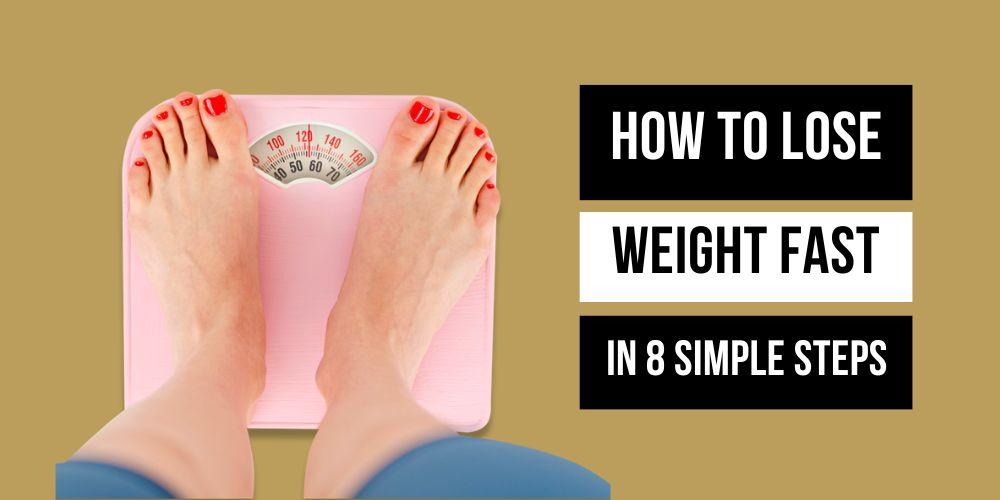For a variety of health reasons, people want to lose weight but may wonder where exactly to start. Many fad diets, weight-reduction plans, and blatant frauds exist as a result, all of which promise quick and simple weight loss. However, these plans may not only be ineffective but also may also endanger your well-being.
Increased physical activity along with a balanced, calorie-controlled diet continue to be the cornerstones of effective weight loss if these practices become a part of a lifestyle change. Consequently, you should make long-lasting adjustments to your eating habits and lifestyle for successful, long-term weight loss.
Here are some recommendations we have given to clients over the years for developing or starting a personalized weight loss program.

Step 1: Set a realistic goal
Having a target weight in mind is undoubtedly a good method to attain better outcomes faster. It also allows you to monitor how your metabolism responds to purposeful or unintended changes in your lifestyle.
For this reason, you might try setting a realistic weight target if you’re having trouble losing weight or even if you’re just interested in weight management. With the assistance of your doctor or other healthcare professionals, you can set SMART goals and target weight to help you stay motivated. Also, you can expect to adjust your goals as time goes on if any changes to your health occur.
Step 2: Reduce refined carbs
Carbs can become your worst enemy when trying to lose weight. Consuming refined sugar, white bread, white rice, potato products, and other processed carbohydrates can raise insulin levels and even promote weight gain. More so than reducing calories, eating fewer of these bad carbs can aid in maintaining long-term weight loss. It can be accomplished by substituting whole fruits and less processed grains for processed carbs.
Step 3: Stay hydrated
Water, according to science, may aid with weight loss in several different ways by decreasing your hunger, speeding up your metabolism, and promoting a more effective workout session. In fact, when you’re exercising, you should always drink water to prevent dehydration or in the case of an outdoor workout, to ward off heat stroke.
And speaking of dehydration, when you experience thirst, sometimes your body mistakes that sensation for hunger. So, by reaching for water instead of a snack, you’re refraining from taking in extra calories.
Step 4: Trying intermittent fasting
While many diets concentrate on what to eat, intermittent fasting focuses primarily on when to eat. However, you can take a different approach. One involves fasting on alternating days in which one day, you eat normally, and the next, you would have just a couple of very small meals. Another plan calls for you to fast for only two days out of the week, while yet another involves eating during a specific eight-hour window during the day.
The advantages of intermittent fasting include burning fat, improved blood pressure, better thinking, working memory, and muscle mass preservation. At the same time, you should embark on a plan for intermittent fasting until your healthcare provider has given you the green light to do so.
Step 5: Reduce your calorie intake
Somewhat similar to fasting, you can choose the route of reducing calorie intake which entails consuming fewer calories than you expend each day. While decreasing calories can be done safely by reducing the size of your meal portions, you can accomplish this by looking at the quality of the food and drinks that you take in as opposed to the quantity.
The reason behind this relates to how your body responds to having too little nutrition and how it can go into “starving mode” if it doesn’t receive adequate nutrition. Yes, it starts to burn fat, but it can also start slowing down your metabolism as a means of self-preservation. Thus, you can try phasing out the high-calorie, high-sugar items from your diet and replacing them with healthier, low-calorie options, such as lean meat and vegetables.
Step 6: Tracking your diet and exercise
As you’re taking the steps mentioned above to lose weight, you can easily download an app or keep a notebook and pen handy to track your progress. Keeping track of nutrition and exercise is so crucial to your weight loss plan for the following reasons:
- It holds you accountable
- It serves as motivation when you see how well you’re progressing
- It gives you an accurate way to monitor your consumption of protein, carbohydrates, and fat
- It helps you to record your exercise habits regularly and to see if your routine needs to be adjusted.
Step 7: Eat more protein
Another important aspect of weight loss involves incorporating more protein. People can lose weight by eating a diet high in healthy, lean protein since it wards off hunger and prevents overeating. When paired with exercise, a high-protein diet can aid in the development of lean muscle, which leads to increased daily calorie expenditure. As a result, this translates into weight loss over time.
Step 8: Get enough sleep
In addition to maintaining healthy habits related to diet and exercise, you should aim for seven to eight hours of sleep every night. The increase in calorie intake and appetite that can occur when you’re sleep-deprived may be prevented by consistently getting enough sleep. Many studies have revealed that those who are sleep-deprived claim to feel hungry more often throughout the day and consume more calories on a regular basis. So adequate sleep is vital to the success of any weight loss program.

Most importantly, you’ll need to be kind and patient with yourself as you embark on your journey toward great health. And remember that certified professionals can help you with getting started or with overcoming plateaus. The most important thing about weight loss is to persevere with your new healthy routine.


